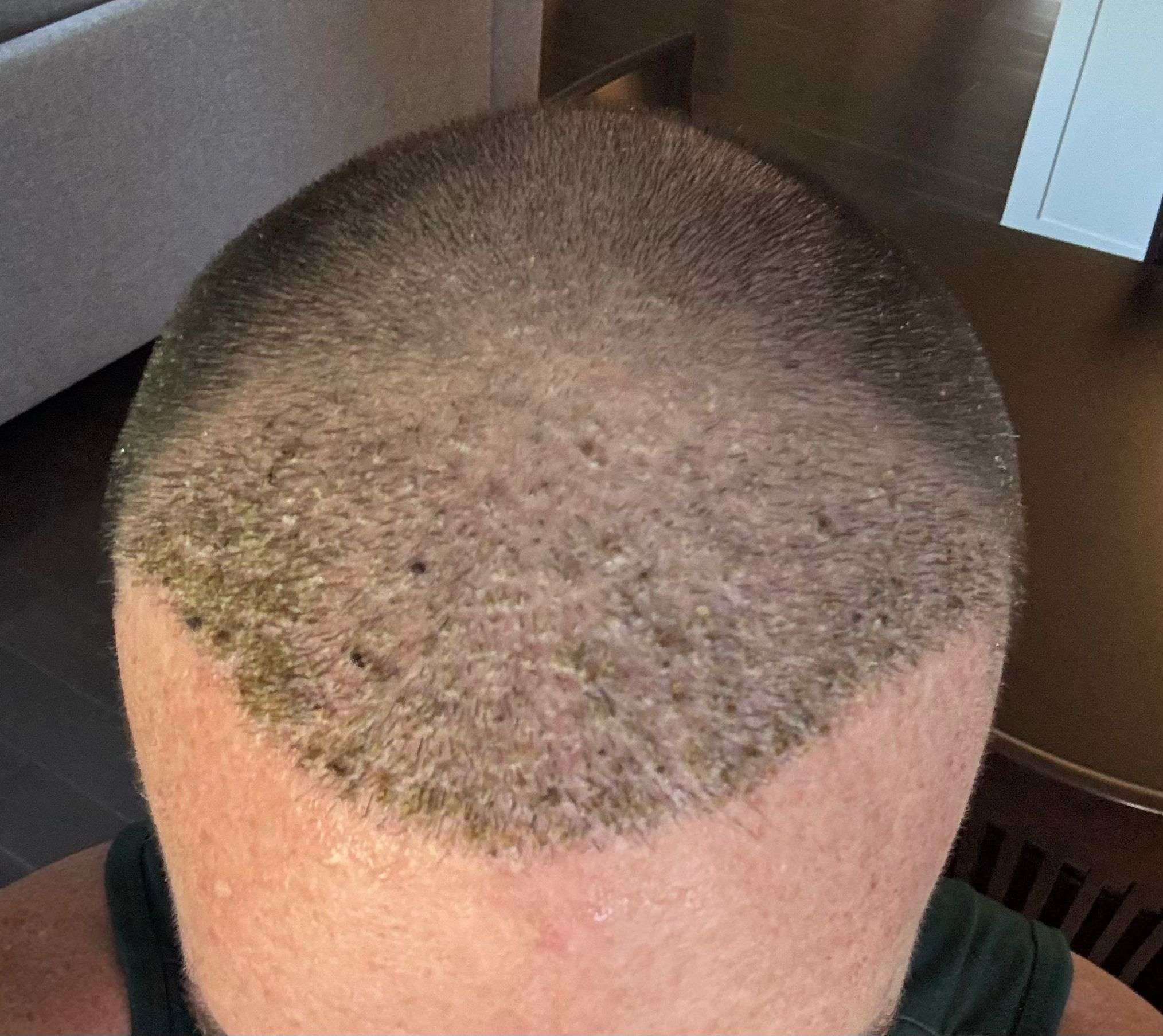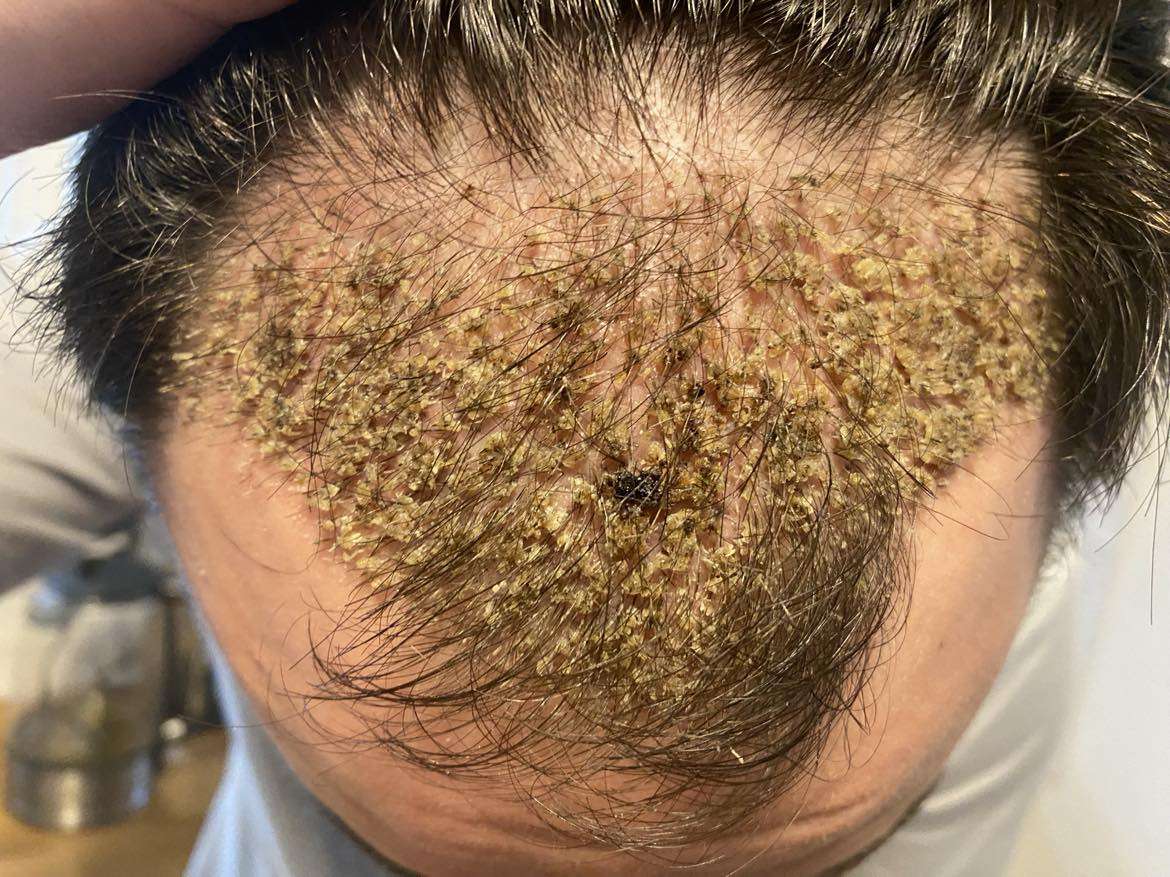After a hair transplant, scabbing is a natural part of the healing process as your scalp recovers and the grafts settle. Proper care and handling of these scabs are crucial to ensure optimal healing and the best results for your hair transplant. Here’s a comprehensive guide on how to safely get rid of scabs after a hair transplant.
Scabs form as a natural response to the minor incisions made during a hair transplant. They protect the grafts and underlying tissues as they heal. It’s essential to handle these scabs carefully to prevent damage to the new hair follicles and ensure proper growth.
Within 24 to 72 hours after surgery, scabs will begin to form on the graft sites. These scabs typically fall off within 3 to 10 days. It’s common to see some hair shedding as the scabs come off, which is a normal part of the healing process. Avoid picking or scratching the scabs, as doing so could lead to infection and jeopardize the success of the grafts.
Post-Transplant Healing
A study by The American Society for Dermatologic Surgery revealed intriguing findings about hair transplantation. The study found that while crusting can increase the risk of grafts becoming dislodged over time, it may actually protect the grafts in the initial days following surgery.
Therefore, allowing scabs to form right after the procedure appears to be essential for graft stability. However, it’s equally important to know when and how to remove these scabs to prevent them from interfering with the healing process. This underscores the importance of adhering closely to post-procedure care instructions.
Let’s explain scabs
Similar to scabs from other types of wounds, they can appear dry and crusty, serving to protect the underlying tissue as it heals. While they may not be visually appealing, they play a crucial role in the healing of the scars beneath them.
During a hair transplant, a patient may undergo either a Follicular Unit Transplant (FUT) or a Follicular Unit Extraction (FUE). Both methods involve taking healthy hair follicles from one area of the scalp and transplanting them into areas affected by hair loss.
Due to the small incisions made in the scalp, the skin experiences some level of trauma. As with any injury, the body responds by forming blood clots to prevent further bleeding. Initially soft, these clots harden into scabs, providing protection as the skin heals underneath. Patients might also notice some swelling or redness of the scalp during this time.
How to Manage Hair Transplant Scabs
After a hair transplant, scabs are a natural part of the healing process, but they can sometimes be challenging to deal with.
These scabs, as they heal, may become itchy. It’s crucial to resist the urge to scratch them, as doing so can dislodge the grafts or cause recurring scabs in the same area. Additionally, scratching increases the risk of infection, which is uncommon but could negatively impact the grafts.
To help manage the itchiness, we prescribe antihistamine medication that can be taken as needed. We also provide our patients with an ATPV wound care solution spray, which can be stored in the refrigerator for a soothing, cooling effect.
Following our aftercare instructions is vital to a successful recovery. You will be advised to use a specific shampoo and exactly how to wash your scalp. After a certain number of days, to start to washing under to shower head.
While scabs typically don’t harm the hair follicles, they should be removed if they don’t naturally fall off within the expected timeframe. If scabs remain after 14 days, consult with the clinic. It might be that you aren’t shampooing vigorously enough, and we may recommend trying that first. Sending us pictures in the first 2 weeks is very important so that we can monitor the progress.

If the scabs are left too long, something must be done. To safely remove or soften hair transplant crusts, you can wet your hair with warm water under the water pressure and gently massage the scalp with a conditioner. This should be done carefully to help remove and lift the dry skin, without using your nails during the process. It's also important to note that some short hairs that were implanted may shed along with the scabs. This is a normal part of the process, and there’s no need to worry unless you see bleeding on the scalp. Avoid attempting to remove the scabs prematurely, as this could harm the hair follicles beneath them.

Scabs left on too long can hinder the growth
It’s clear that scabs are a very common part of the healing process after hair transplant surgery, and many patients experience them. Fortunately, there are several methods to help manage and ease this phase of recovery.
While hair transplant scabs play a crucial role in the grafting process, they shouldn’t be allowed to interfere with it. Proper care, including gentle scalp washing or seeking a doctor’s assistance for more persistent scabs, is vital to ensure they do not impede the healing process.
We like to consider Hair Loss Solutions to be, your premier destination for restoring your hair’s vitality.
Being the pioneers in Eastern Canada, we’re thrilled to introduce NeoGraft® FUE hair transplants and other hair loss services.
Join us at Hair Loss Solutions, where innovation meets expertise, and let us help you regain your confidence. Experience the future of hair restoration with our dedicated team by your side.
info@hairlosssolutionsmoncton.com
Phone : +1 (506) 743-3768
855 Dieppe Blvd, Dieppe, NB E1A 8S6, Canada | Unit 5
Copy right © reserved by Hair Loss Solutions | Designed by Markmiz